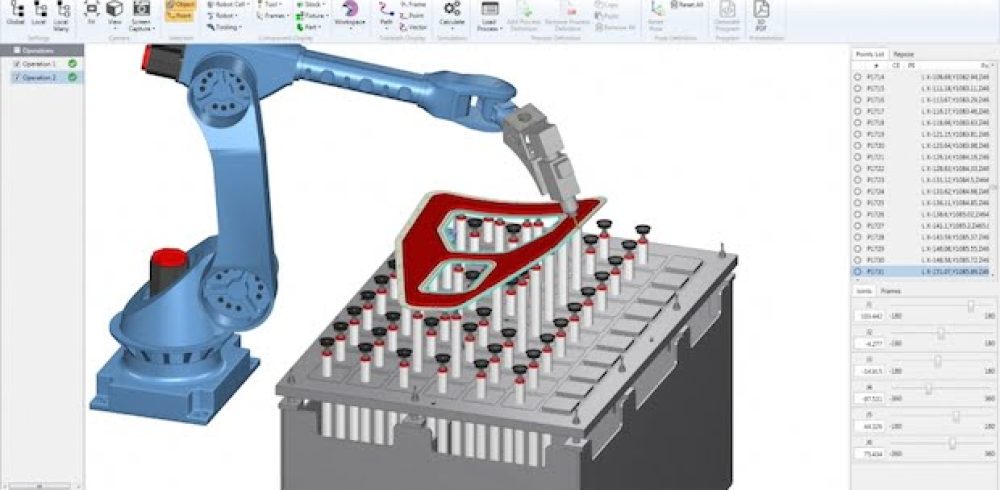Rise of the robots : Intuitive programming software is helping manufacturers in the aerospace industry exploit the potential of robots.
In the face of ever-more demanding production and efficiency targets and the growing use of new types of composite materials, the aerospace industry is increasingly turning to robots to solve its production challenges.
Indeed, robotic technology can now compete for a broad range of aerospace applications previously limited to custom machinery, including one-up assembly, drilling and filling, automated tape lay-up (ATL), and automated fibre placement (AFP)
However, the full potential of robots can often be limited by the challenges of programming a robot in a CAD / CAM environment.
Singularity, calibration, collisions, reach limitations, and motion granularity are uniquely complex to robotic systems and can make programming robots for machining operations particularly cumbersome.
Whatâs more, companies accustomed to using CNC machine tools get stuck when they try to deploy a robot for the first time, and realize that they donât have the proper software for the job.
The main problem with many existing methods, such as using the robot manufacturerâs software for programming, or using CAD / CAM point converters to create robot trajectories is the lack of a path optimisation tool. Once the program is applied to the robot, there may be a lengthy prove-out period.
However, according to UK software vendor 4D Engineering CAD/CAM software specifically designed for programming robots can address many of these issues by automatically calculating and optimising robot trajectories, seamlessly integrating external axes, and providing instant visual feedback. Whatâs more, it should also be easy to use, even for operators new to robotics.
4D Engineering is the UK distributer of Jabez Technologiesâ Robotmaster software, a CAD / CAM based offline robot programming tool that streamlines programming, simulation, code generation and path optimisation into one integrated solution
One of a number of manufacturers to exploit the benefits of this approach is French composite specialist Sogerma Composite Aquitaine which replacing its old software with Robotmaster and managed to reduce programming time by two to three times. Robotmaster allows us to work in the same way we used our CNC machines to tool parts, said Sogermaâs CAD & CAM production engineering manager Eddy Coubard. Since Robotmaster also interfaces with Mastercam software, we were able to quickly and easily perform full 7-axis milling and drilling.
Coubard added that the firm is using Robotmaster to program a rail-mounted 6-axis robot. Applications include tooling thermal protection parts made of glass fibre for the Airbus A330 airliner and honeycomb for the Airbus Super-Puma MK II helicopter.
Without Robotmaster, Coubard said that he would have most likely abandoned robotics and gone back to old CNC machining methods.
Meanwhile, engineers at the Advanced Manufacturing Research Centre in Sheffield have been using Robotmaster to help develop new robotic production methods. Weâve been working with Robotmaster for the last three years, said Ben Morgan, head of the AMRCâs
Integrated Manufacturing Group. The software has allowed our operators and engineers to quickly and effectively re-program the cell, as well as optimize the machine path. It has great flexibility and control.
Using this software lends itself to the research environment in particular, because our range of work and part variability, says Morgan. We donât manufacture anything here, so often we end up doing one, two, or three parts and then weâll move on to another part. But the aerospace sector itself is demanding reconfigurability as well, so weâre meeting that requirement with Robotmaster.
Manufacturing & Engineering Magazine | The Home of Manufacturing Industry News















